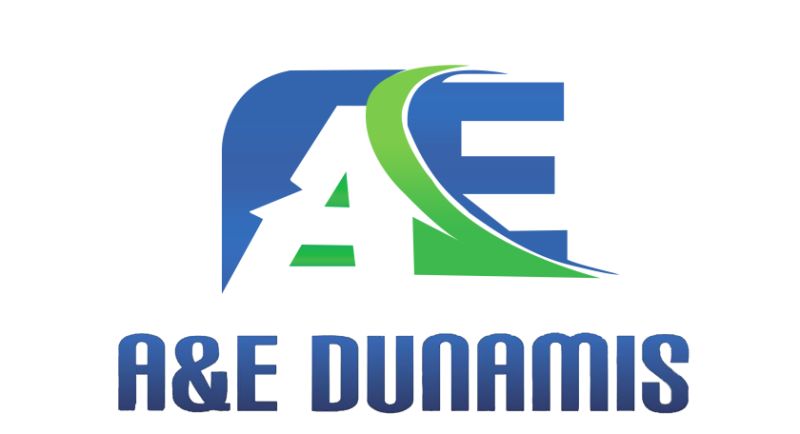⚡ Appliances You Can and Cannot Use with an Inverter – A Guide by A&E Dunamis
⚡ Appliances You Can and Cannot Use with an Inverter – A Guide by A&E Dunamis
🔋 Introduction
Inverters have become a household essential for managing power outages and running appliances during blackouts. But not all appliances are suitable for inverter use—especially if you’re using a standard home inverter.
At A&E Dunamis, we manufacture high-efficiency inverters designed to support a wide range of household and office appliances. In this guide, we’ll help you understand which appliances are inverter-friendly and which ones you should avoid using with your A&E Dunamis Inverter.
✅ Appliances You Can Use with an Inverter
A&E Dunamis Inverters are designed to support essential low-to-medium power appliances. These are perfect for maintaining comfort and productivity during a power outage.
🔌 Common Compatible Appliances:
| Appliance | Average Power (Watts) |
|---|---|
| LED Bulbs & Tube Lights | 5W – 40W |
| Ceiling & Table Fans | 40W – 75W |
| Wi-Fi Router | 10W – 20W |
| Television (LED) | 60W – 120W |
| Laptop & Phone Chargers | 20W – 150W |
| Decoder / Set-Top Box | 15W – 30W |
| Sewing Machine (manual) | 50W – 100W |
| CCTV Cameras | 10W – 60W |
| Small Sound Systems | 100W – 200W |
🔹 Pro Tip: The A&E Dunamis 1.5kVA – 3.5kVA inverters are ideal for running these essential loads for 6–10 hours depending on your battery capacity.
⚠️ Appliances You Should Avoid Using with an Inverter
High-power appliances draw heavy current and can either overload your inverter or drastically reduce backup time. Some may also damage your inverter’s internal circuits if used without proper planning.
❌ Avoid These Appliances Unless Specified:
| Appliance | Average Power (Watts) |
|---|---|
| Electric Kettle / Iron | 1200W – 2200W |
| Microwave Oven | 1000W – 1500W |
| Hair Dryer | 800W – 2000W |
| Refrigerator (large, inverter-type) | 400W – 800W |
| Air Conditioner | 800W – 1800W |
| Water Heater (Geyser) | 1500W – 3000W |
| Washing Machine (full cycle) | 800W – 1600W |
| Electric Cooker / Stove | 1000W – 3000W |
| Vacuum Cleaner | 800W – 1200W |
| Blender (Heavy Duty) | 400W – 1000W |
🔴 Warning: Connecting these to a standard inverter can cause overload shutdown or permanent damage.
🔍 How to Check if Your Appliance Is Inverter-Friendly
- Check the Watt Rating: Look for the wattage label on your appliance.
- Calculate Total Load: Add up the total wattage of all devices you plan to run.
- Match with Inverter Capacity: Ensure the total load does not exceed the VA rating of your A&E Dunamis Inverter.
- Use a Pure Sine Wave Inverter: Ideal for sensitive electronics like TVs and laptops. All A&E Dunamis inverters are pure sine wave, ensuring safe operation.
⚙️ Matching Inverter Capacity with Appliance Usage
| Inverter Size | Suitable For |
|---|---|
| 1.5kVA | Lights, fans, TV, router, laptop |
| 2.5kVA | Above + small fridge, decoder, CCTV |
| 3.5kVA | Above + printer, small water pump, desktop PC |
| 5kVA+ | Heavy-duty usage: fridge, freezer, washing machine (short cycle) |
🛠️ Optional Accessories to Improve Performance
- 🔋 Tubular Batteries: For longer backup
- ⚡ A&E Dunamis Stabilizer: Protects your inverter and appliances from power fluctuations
- ☀️ Solar Panels: Add solar for hybrid backup solutions
💡 Tips to Maximize Inverter Efficiency
- Use LED lights and energy-efficient appliances
- Avoid running multiple high-watt devices at the same time
- Don’t overload your inverter—leave some margin for startup surges
- Schedule regular battery maintenance for optimal performance
🏁 Conclusion
Knowing which appliances you can safely use with your A&E Dunamis Inverter will help you protect your system, extend battery life, and enjoy seamless backup power during outages.
Whether you’re powering your home, shop, or office, A&E Dunamis Inverters are built for reliability and performance—just pair them with the right load and enjoy worry-free power backup!
📞 Need Help Choosing the Right Inverter?
We’re here to help you select the perfect A&E Dunamis Inverter and battery combo for your power needs.
👉 Call Now: [08023068686]
👉 Shop Online: [www.aeduamis.com]
🔍 FAQs
Q: Can I run a fridge on an inverter?
A: Yes, but only if your inverter is at least 2.5kVA and your battery bank supports the load.
Q: What happens if I overload my inverter?
A: It may shut down automatically or even get damaged over time.
Q: Can I connect my inverter directly to a generator?
A: Yes, but use a stabilizer to avoid voltage fluctuations.

